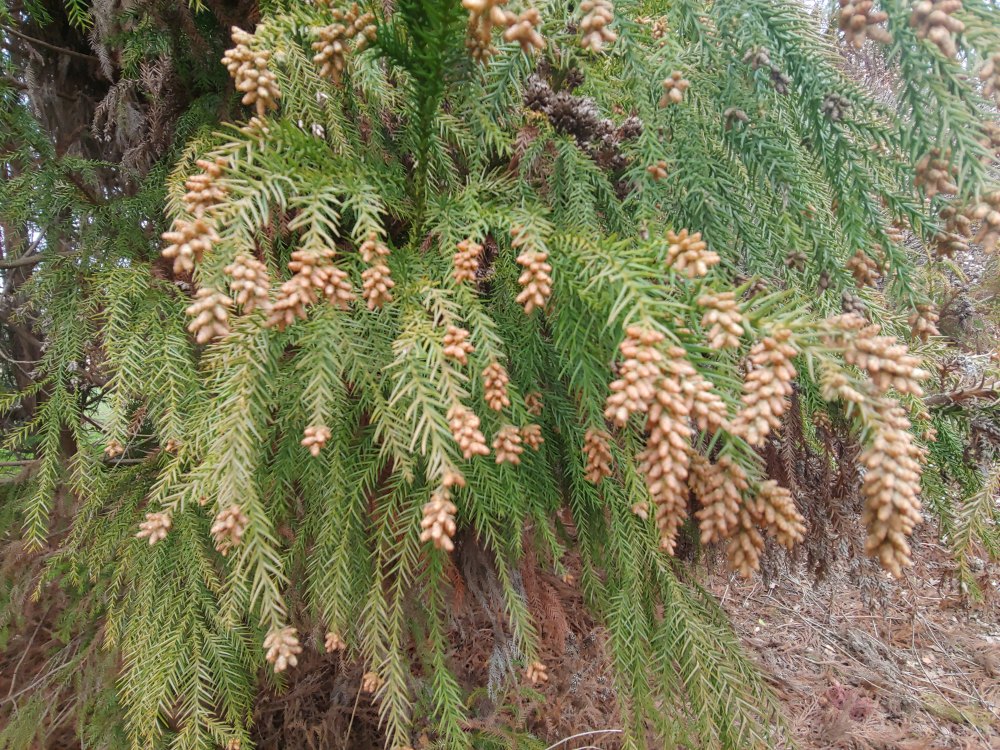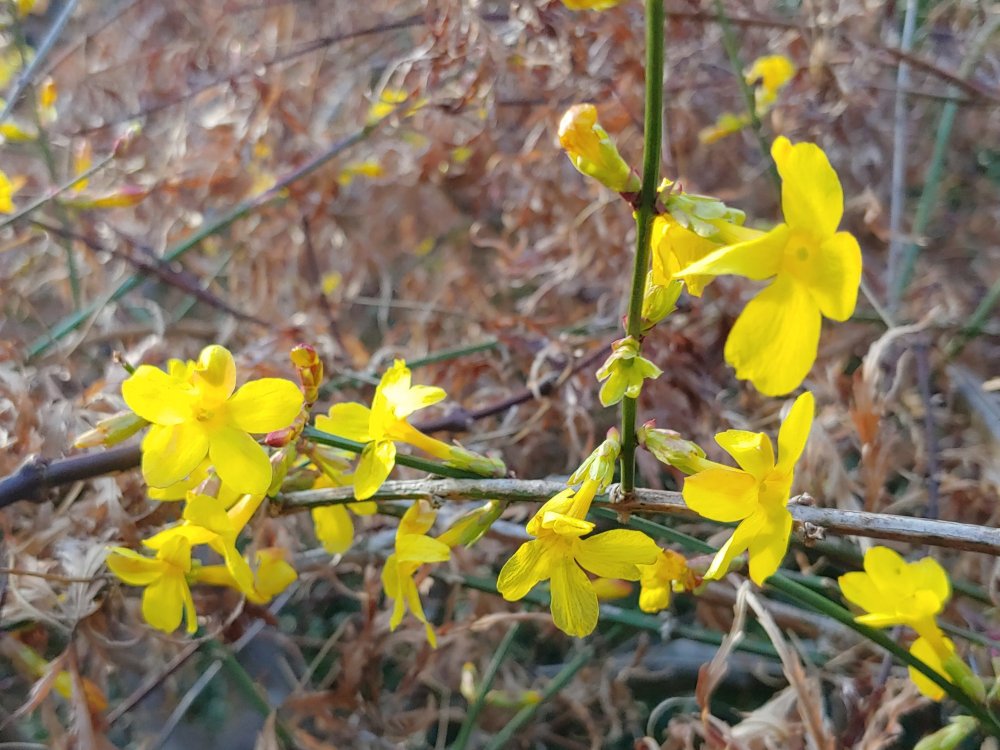Today is a bad day to be snooping beneath the Japanese cedars (Crytomeria japonica ‘Sekkan sugi’), looking for early signs of plume poppies (Macleaya cordata) that have nearly disappeared in the shade in recent years. It is too early for the poppies, I find, and every rub against the cedar releases a brown cloud of pollen.

This has not unleashed a fit of allergic sneezing, but the mix of a high degree of pollen to oxygen seems much less than optimal. While many flowers must have a pollinating insect, the clouds of pollen are spread by the slightest breeze, an efficient means of pollination if the target male is a branch away.
While I have not yet seriously begun the spring cleanup, wanderings through the garden have increased in February, mostly to figure places for spring purchases soon to be delivered. The search for the plume poppy is an early try to save this gangly perennial before it is gone. It must be found, dug, and moved to a sunnier spot with room to spread. I hope I am not too late.
I have settled on a spot for a small grouping of Hart’s Tongue ferns (Asplenium scolopendrium) that will soon be delivered. This fern thrives growing in thin soil between limestone outcroppings, so a bit more planning than usual is required for planting in the garden’s acidic soil. I have found an ideally shaded slope where the long suffering Alaskan cedar was removed several weeks ago. An irregular wall of small chunks of limestone will be constructed, with a mix of clay and limestone chips as a backfill. This should raise the pH a few notches, and the shade should be just right. The Hart’s Tongue is an unusual fern, and I look forward to it thriving in this newly planted area that will fill the considerable space vacated by the Alaskan cedar.
Browsing deep into the thirty year old thicket of planted beech, dogwoods, cherry, and hollies, I have concluded that planting winter jasmine (Jasminum nudiflorum, below) and a weeping Japanese maple (Acer palmatum dissectum)in close proximity is a considerable mistake. Both overhang the back side of the koi pond, an area of nearly impenetrable growth, but one that I slowly undertake to clear to create somewhat of a woodland path. The entry and exit points are unclear, but it seems a shame to waste this barren ground space beneath trees and tall shrubs.

In any case, as would be expected if the combination of jasmine and Japanese maple was described to me, the arching branches of the winter jasmine have climbed up into the maple’s. The tangle of branches has been cleared once before, but these are clearly inappropriate choices for such close proximity. I, of course, should have thought this through, but things happen, on occasion, and the jasmine is deeply rooted between boulders at the pond’s edge, so I see no way out but to prune the jasmine regularly.
The gardener must make the best of minor nuisances. Brown clouds of pollen, lost plume poppies, and tangled branches are the slightest of concerns.
Yellow clouds of redwood pollen started a while ago. It looks like pine pollen. Something that most who were outside at the time remember about the Loma Prieta Earthquake was the dense clouds of pollen that was shaken from oaks and cedars, which was on for the middle of October.
Hello, Dave. I planned to prune my knockout rose bushes, butterfly bush, superblue lavender in the “dead of winter.” We never really had a decent “dead of winter” (Loudoun County) and now my roses are leafing. I’m afraid we’ll have a March snow storm, too. Should I prune or wait?
Thanks!
Pruning encourages growth, and with many more frosts on the way we don’t want tender growth that wil be damaged. It is best to wait until April to prune when there is less chance of a hard frost.